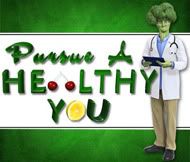We all know that eating a plant-based diet abundant in fruits and vegetables does wonders for our health. The reduction in the three most talked about diseases in these regards are obesity, heart disease, and diabetes. All of them can be prevented or reversed just by adopting healthy eating habits but there's another great benefit to eating wholesome, healthy foods―superb oral health!
Following a diet of whole, plant-based foods has been shown to reduce bad breath, prevent gingivitis and periodontal disease, and even reduce the risk of oral related cancers. A closer look at each one reveals why this is so.
Bad breath, also known as halitosis, is caused mainly by the formation and release of volatile sulfur compounds (VSCs) during bacterial breakdown of proteins [1]. Eighty to ninety percent of halitosis cases originate in the mouth due to the abundance of food particles left behind after eating. Bacteria, located within the oral cavity, then have a field day with feasting on these food particles. This is especially the case in individuals suffering from gingivitis and periodontal disease as these bacteria can be found hiding beneath diseased gum lines. However, the main stomping ground for these bacteria is on the back third of the top surface of the tongue. In fact, four times as many bacteria are found there than in any other part of the mouth [2].
The other 10%-20% of bad breath cases originate from sources such as infections, medication, kidney failure, liver failure, and pancreatic disease amongst other things. The putrefaction of food in the lower digestive tract is also a likely culprit in these cases. Sulfur containing gases from certain foods like garlic and onions can be absorbed into the bloodstream and make their way to the lungs where they are then exhaled through the mouth producing a foul odor. This odor can last up to three days after consuming such foods.
Following a diet of whole, plant-based foods has been shown to reduce bad breath, prevent gingivitis and periodontal disease, and even reduce the risk of oral related cancers. A closer look at each one reveals why this is so.
Beating Back Bad Breath
Bad breath, also known as halitosis, is caused mainly by the formation and release of volatile sulfur compounds (VSCs) during bacterial breakdown of proteins [1]. Eighty to ninety percent of halitosis cases originate in the mouth due to the abundance of food particles left behind after eating. Bacteria, located within the oral cavity, then have a field day with feasting on these food particles. This is especially the case in individuals suffering from gingivitis and periodontal disease as these bacteria can be found hiding beneath diseased gum lines. However, the main stomping ground for these bacteria is on the back third of the top surface of the tongue. In fact, four times as many bacteria are found there than in any other part of the mouth [2].
The other 10%-20% of bad breath cases originate from sources such as infections, medication, kidney failure, liver failure, and pancreatic disease amongst other things. The putrefaction of food in the lower digestive tract is also a likely culprit in these cases. Sulfur containing gases from certain foods like garlic and onions can be absorbed into the bloodstream and make their way to the lungs where they are then exhaled through the mouth producing a foul odor. This odor can last up to three days after consuming such foods.





























